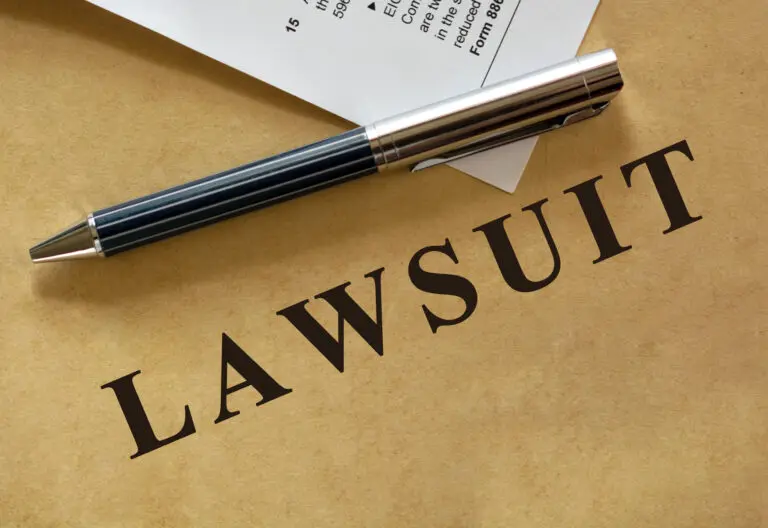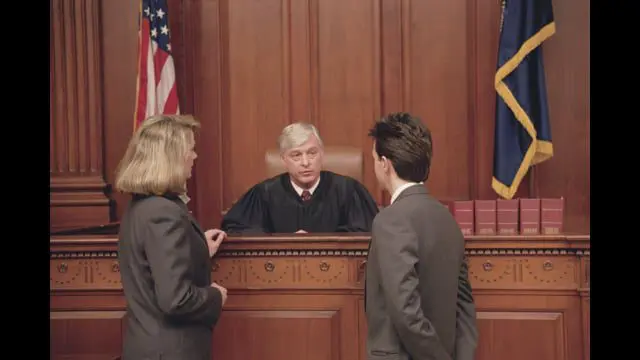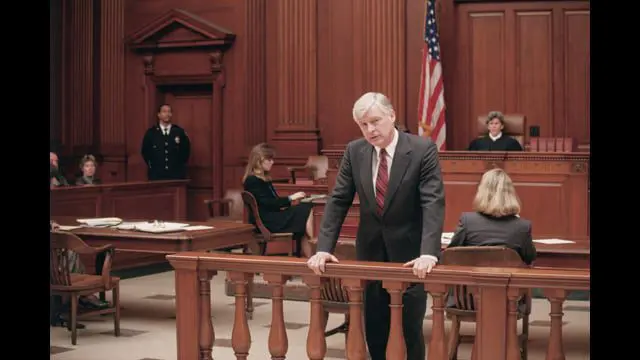If you’ve been involved in a pedestrian accident, one of the first questions that may come to mind is, “How much does a pedestrian accident lawyer charge for their services?” Understanding the costs associated with hiring a lawyer is crucial in making an informed decision about pursuing a personal injury claim. The charges of a pedestrian accident lawyer can vary based on several factors, including the complexity of the case, the lawyer’s experience, and the fee structure they use. This article explores the different types of fees pedestrian accident lawyers may charge, what those fees cover, and how they are calculated.
Types of Fee Structures in Pedestrian Accident Cases
Pedestrian accident lawyers typically use several types of fee structures to charge for their services. Understanding these structures is key to knowing what to expect when hiring a lawyer.
Comisión de contingencia
En cuota de contingencia arrangement is the most common fee structure used by pedestrian accident lawyers. Under this arrangement, the lawyer only gets paid if you win your case or obtain a settlement. The fee is usually a percentage of the compensation awarded. This percentage can vary, but it often ranges from 25% to 40%, depending on the complexity of the case and the lawyer’s experience.
Contingency fees are beneficial for clients who may not have the funds to pay for legal services upfront. This arrangement also aligns the lawyer’s interests with yours, as they are motivated to secure the highest possible settlement or award. However, it’s important to understand that if you lose the case, you might still be responsible for certain costs, such as court filing fees or costs associated with gathering evidence.
Hourly Rate
Some pedestrian accident lawyers may charge an hourly rate for their services. This means that the lawyer bills you for every hour they spend working on your case. The hourly rate can vary significantly depending on the lawyer’s experience and the geographic location of their practice. Hourly fees can range from $150 to $500 per hour or more.
An hourly fee arrangement can become expensive, especially in complex cases that require a lot of time and resources. However, it provides a transparent billing method where you can see exactly how much time the lawyer is dedicating to your case. If you choose an hourly fee structure, it’s important to request an estimate of the total costs upfront to avoid unexpected expenses.
Flat Fee
A flat fee arrangement is less common in pedestrian accident cases but can be used for specific legal services, such as drafting a demand letter or representing you in a simple negotiation. The lawyer charges a one-time fee that covers all services related to the agreed-upon task. This fee structure provides clarity and certainty regarding costs, which can be advantageous for clients.
While flat fees provide upfront clarity, they are not typically used for cases involving litigation or extensive legal work because they don’t account for the variability in the amount of time and effort required. It’s more common for lawyers to use flat fees for more predictable and less time-consuming tasks.
Factors Influencing the Cost of Hiring a Pedestrian Accident Lawyer
Several factors can influence how much a pedestrian accident lawyer charges for their services. Understanding these factors can help you better prepare for the costs associated with hiring a lawyer.
Experience and Expertise
The experience and expertise of a lawyer play a significant role in determining their fees. Lawyers with extensive experience in derecho de daños personales and a track record of successfully handling pedestrian accident cases may charge higher fees due to their specialized knowledge and skills. Hiring an experienced lawyer can be advantageous, as they are more likely to navigate complex legal issues and negotiate effectively with insurance companies.
On the other hand, less experienced lawyers may charge lower fees to attract clients. While this can be cost-effective, it’s important to consider whether the lawyer has the necessary expertise to handle your case effectively. It’s worth investing in a lawyer who can provide the best representation, even if their fees are higher.
Complexity of the Case
The complexity of a pedestrian accident case can also impact the fees charged by a lawyer. Cases involving severe injuries, multiple parties, or disputed liability may require more time and resources to resolve. In such cases, the lawyer may charge higher fees to cover the additional work involved.
For example, a case involving a hit-and-run pedestrian accident may require more investigative work to identify the at-fault driver and gather evidence. Similarly, cases involving disputed liability may require expert testimony, accident reconstruction, and extensive legal research. All these factors can increase the overall cost of hiring a pedestrian accident lawyer.
Geographic Location
The geographic location of the lawyer’s practice can also affect their fees. Lawyers practicing in major cities or regions with a higher cost of living may charge more than those in smaller towns or rural areas. Additionally, local legal market conditions, such as demand for legal services and competition among lawyers, can influence pricing.
For example, a pedestrian accident lawyer in New York City may charge a higher hourly rate than a lawyer in a smaller town due to the higher cost of living and greater demand for legal services. It’s important to consider location when budgeting for legal fees, as it can significantly impact the overall cost.
Understanding Contingency Fees in Detail
Contingency fees are a popular fee arrangement in pedestrian accident cases because they provide access to legal representation without requiring upfront payment. However, it’s important to understand how contingency fees work and what they cover.
How Contingency Fees Are Calculated
Contingency fees are calculated as a percentage of the compensation awarded to the client. If you win your case or obtain a settlement, the lawyer’s fee is deducted from the total amount awarded. The percentage may vary based on factors such as the lawyer’s experience, the complexity of the case, and the stage at which the case is resolved.
For example, if a pedestrian accident lawyer charges a 30% contingency fee and you receive a settlement of $100,000, the lawyer would receive $30,000 as their fee. The remaining $70,000 would go to you, minus any additional costs or expenses incurred during the case.
It’s important to clarify whether the contingency fee percentage is calculated before or after expenses are deducted. Some lawyers calculate their fee based on the gross amount awarded, while others calculate it based on the net amount after expenses are deducted. Make sure to discuss this with your lawyer to avoid any misunderstandings.
What Contingency Fees Cover
Contingency fees typically cover the lawyer’s time and effort in handling the case, including preparing legal documents, negotiating with insurance companies, and representing you in court if necessary. However, contingency fees do not always cover additional expenses, such as court filing fees, expert witness fees, or costs associated with gathering evidence.
Some pedestrian accident lawyers may agree to cover these expenses upfront and deduct them from the settlement amount, while others may require you to pay these costs separately. It’s important to clarify what expenses are included in the contingency fee arrangement and what additional costs you may be responsible for.
Hourly Rates: Pros and Cons
Hourly rates are another fee structure that some pedestrian accident lawyers use. While this arrangement can provide transparency in billing, it also has its advantages and disadvantages.
Advantages of Hourly Rates
One of the main advantages of an hourly rate arrangement is that it provides a clear breakdown of how much time the lawyer spends on your case. This transparency can help you understand the level of effort being put into your case and ensure that you are getting value for your money.
Hourly rates also allow for flexibility in the scope of work. For example, if you only need a lawyer to review documents or provide legal advice, you can limit the hours they spend on your case, potentially reducing costs.
Disadvantages of Hourly Rates
The main disadvantage of hourly rates is that they can become expensive, especially if the case requires a significant amount of time and resources. Unlike contingency fees, where the lawyer’s payment is contingent on winning the case, hourly rates require you to pay for the lawyer’s time regardless of the outcome. This can be a financial burden, particularly in cases that drag on for an extended period.
Additionally, hourly rates may not incentivize the lawyer to resolve the case quickly or efficiently, as their payment is tied to the number of hours worked. It’s important to discuss the estimated hours and total cost with your lawyer upfront to ensure you are comfortable with the potential expenses.
Flat Fees: A Simplified Approach
Flat fees provide a simplified approach to legal billing, offering a one-time payment for specific services. While not commonly used in pedestrian accident cases, flat fees can be beneficial in certain situations.
When Flat Fees Are Used
Flat fees are typically used for specific legal tasks that are predictable in scope and time. For example, a lawyer may charge a flat fee for drafting a demand letter or representing you in a straightforward negotiation. This fee structure provides clarity and certainty regarding costs, making it easier for clients to budget for legal services.
While flat fees are not typically used for full representation in pedestrian accident cases that involve litigation or complex legal work, they can be useful for clients who need assistance with specific tasks or stages of the legal process.
Benefits and Limitations of Flat Fees
The primary benefit of flat fees is that they provide upfront clarity about the cost of legal services. This can be particularly advantageous for clients who want to avoid the uncertainty of hourly billing or the potential expense of a contingency fee.
However, the limitation of flat fees is that they may not account for the variability in the amount of time and effort required to resolve a case. If a case becomes more complex than initially anticipated, the lawyer may not be compensated for the additional work, potentially affecting the quality of representation.
Additional Costs and Expenses in Pedestrian Accident Cases
In addition to the fees charged by a pedestrian accident lawyer, there are several other costs and expenses that may arise during the course of a case. It’s important to be aware of these potential expenses so you can plan accordingly.
Court Filing Fees
Court filing fees are a common expense in pedestrian accident cases that proceed to litigation. These fees are charged by the court to file legal documents and initiate a lawsuit. The amount of the filing fee can vary depending on the jurisdiction and the type of case.
While some lawyers may cover court filing fees as part of their contingency fee arrangement, others may require clients to pay these costs upfront. It’s important to clarify who is responsible for court filing fees before proceeding with your case.
Expert Witness Fees
In some cases, expert witnesses may be required to provide testimony or analysis to support your claim. Expert witnesses can include medical professionals, accident reconstruction specialists, or economists who can provide insight into the financial impact of your injuries.
Expert witness fees can be significant, as these professionals charge for their time and expertise. The cost of expert witnesses can vary depending on the complexity of the case and the specific expertise required. Make sure to discuss the potential need for expert witnesses and their associated costs with your lawyer.
Costs of Gathering Evidence
Gathering evidence is a crucial part of building a strong case, but it can also be expensive. Costs associated with gathering evidence can include fees for obtaining medical records, accident reports, and other documentation. Additionally, there may be costs for hiring investigators or accident reconstruction specialists to gather and analyze evidence.
While some lawyers may cover these costs as part of their fee arrangement, others may require clients to pay these expenses separately. It’s important to discuss the potential costs of gathering evidence with your lawyer and to understand how these expenses will be handled.
Conclusion: Understanding Pedestrian Accident Lawyer Fees
Navigating the costs of hiring a pedestrian accident lawyer can be challenging, but understanding the different fee structures and potential expenses can help you make an informed decision. Whether you choose a contingency fee, hourly rate, or flat fee arrangement, it’s important to clarify all costs upfront and to understand what is included in the fee.
Working with a skilled pedestrian accident lawyer can provide valuable support and representation, helping you navigate the legal process and secure the compensation you deserve. By understanding the costs associated with hiring a lawyer, you can better prepare for the financial aspects of your case and focus on your recovery. If you have been involved in a pedestrian accident, don’t hesitate to seek legal advice to learn more about your options and the potential costs involved.
Attorneys.Media Video Document References
- Is Personal Injury Part of Your Law Practice?
- As an Attorney, How Are You Generating Content for Your Online Presence?
- How Can You Help Potential New Clients Get Their Questions Answered?
- How Do You Differentiate Yourself When Someone Looks Online for Help?
- How Do You Differentiate Yourself as a Criminal Defense Attorney?
- Have You Been Thinking About Video Marketing for Your Law Firm?
- Should Attorneys Use Video Marketing to Attract New Clients?
- What Do Potential Clients See When They Research Your Name Online?
- Cómo puede ayudarle Attorneys.Media









